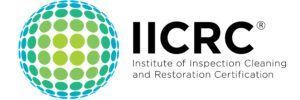Toxic Mold Information and Resources
If you suspect you have mold in your home or office, you're probably wondering, "Is it dangerous?" Molds are not all created equal. Some are relatively benign and are even used in pharmaceuticals. Mold species are generally categorized as one of three types:
- Allergenic – Unlikely to cause illness (though it may aggravate mild allergies)
- Pathogenic – Can cause infection in people who are immunocompromised
- Toxigenic – Toxic to all humans and animals who encounter it
Unfortunately, several types of mold are considered toxic to human beings. Many of these are found in buildings that have sustained water damage. Identifying most of these molds by appearance alone is impossible, so proper testing and identification are essential.
Below are some of the most common toxic molds found in water-damaged buildings.
Stachybotrys
Often referred to as "black mold," Stachybotrys is one of the most dangerous types of mold found indoors. Inhalation can cause flu-like symptoms as well as digestive distress, impaired memory, headaches, severe respiratory damage, and more. Children and those with CIRS or compromised immune systems are especially at risk. This is also one of the types of toxic mold to produce mycotoxins.
Chaetomium
Chaetomium is most often found in water-damaged buildings. It can be found in soil and houseplant debris but thrives in dark, wet areas like drywall, beneath wallpaper, baseboards, and carpet. It is known for causing skin and nail infections, red, watery eyes, and breathing difficulties. Chaetomium is also associated with neurological damage and certain autoimmune diseases; mycotoxins can be carcinogenic.
Aspergillus
Aspergillus is one of the most common types of toxic indoor mold. It can be found due to water damage, but also on decaying plant matter, carpet, and stored foods and spices. Spores can be tracked in from outdoors on shoes, clothing, and pets. Inhalation of Aspergillus can cause a severe pulmonary condition called Aspergillosis. This is also a mycotoxin-producing mold.
Penicillium
Penicillium is commonly found in buildings that have sustained water damage, but also on building materials and in dust in indoor environments. If inhaled, it can cause respiratory distress, bronchitis, and many other allergy symptoms. Penicillium is another carcinogenic mycotoxin-producing mold.
Fusarium
Fusarium is commonly found on wallpapers, inside humidifiers, basements, and in houseplant soil. Inhalation of Fusarium can cause a weakened immune system, keratitis, asthma, respiratory distress, and ocular infections. It has also been linked to gastrointestinal illnesses and some others that can affect the female reproductive system. This type of mold produces harmful mycotoxins.
Cladosporium
Cladosporium is often found in kitchens and bathrooms, on painted walls, behind wallpaper, and under flooring. Most species of Cladosporium are not as dangerous as some mentioned. Still, continuous exposure can lead to sinusitis, asthma, chronic allergies, and in rare cases, pulmonary edema and emphysema. Most species of Cladosporium do not produce mycotoxins.
These Celebrities have been affected by mold,
You are not alone.
Need more information? Call Certified Indoor Air at (919) 214-5000.













